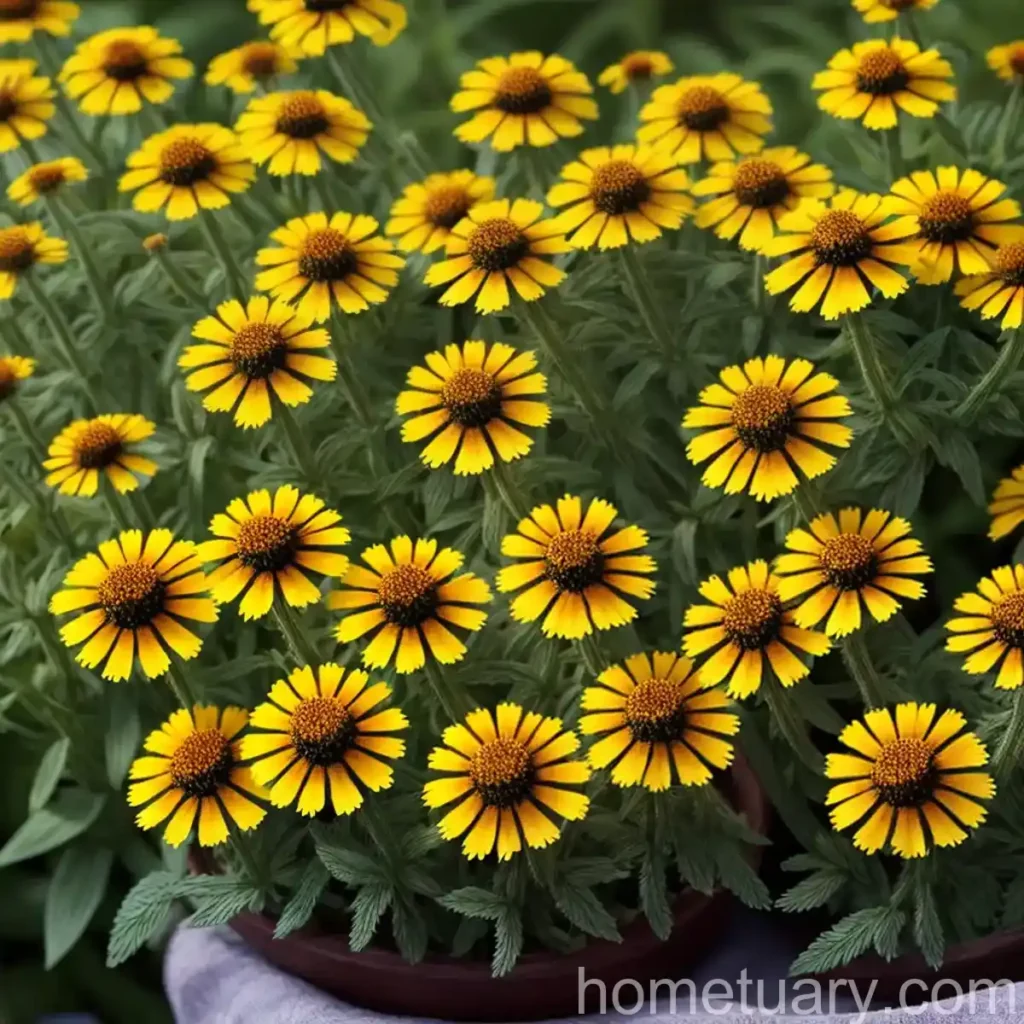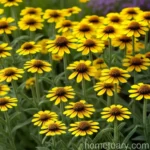Plant Profile: Sneezeweed (Helenium ‘Moerheim Beauty’)
Helenium ‘Moerheim Beauty’, commonly known as sneezeweed, is a stunning perennial flower that belongs to the Asteraceae family. This plant is cherished for its vibrant and captivating blooms, making it a favorite among gardeners and landscaping enthusiasts. In this comprehensive guide, we will delve into the various aspects of sneezeweed cultivation, including its cultural requirements, uses, maintenance, and much more.
What is Sneezeweed (Helenium ‘Moerheim Beauty’)?
Helenium ‘Moerheim Beauty’, also referred to as sneezeweed, is a herbaceous perennial that originates from North America. Despite its peculiar name, which may suggest otherwise, this plant does not induce sneezing. The term “sneezeweed” is attributed to the historical use of its dried leaves in making snuff, a type of powdered tobacco that could provoke sneezing when inhaled.
The ‘Moerheim Beauty’ variety is particularly valued for its stunning daisy-like flowers, which appear in warm shades of orange, copper, and gold. These vibrant blooms emerge atop tall, erect stems, creating a captivating display in the garden.
Key Takeaways
- Sneezeweed, or Helenium ‘Moerheim Beauty’, is a striking perennial known for its vibrant daisy-like flowers.
- This plant is easy to grow and maintain, making it ideal for both novice and seasoned gardeners.
- Sneezeweed is a versatile plant that can be used in various settings, including borders, meadows, and mixed perennial plantings.
Culture
Uses
The sneezeweed (Helenium ‘Moerheim Beauty’) serves various landscaping and gardening purposes, adding beauty and vibrancy to outdoor spaces. Some common uses of this plant include:
- Borders and Edges: Sneezeweed’s tall, erect stems and eye-catching blooms make it an excellent choice for border plantings and edging.
- Cut Flower Arrangements: The striking flowers of Helenium ‘Moerheim Beauty’ are often utilized in floral arrangements, adding a pop of color and interest to indoor displays.
- Pollinator Gardens: The nectar-rich blooms of sneezeweed attract pollinators, such as butterflies and bees, making it a valuable addition to pollinator-friendly gardens.
Water
Sneezeweed thrives in moist to wet soil conditions, although it can also tolerate periods of drought once established. When watering sneezeweed, it is essential to maintain consistent moisture levels, especially during the plant’s active growth phases and flowering period.
Sunlight
For optimal growth and blooming, sneezeweed requires full sun to partial shade. Providing the plant with at least 6 hours of direct sunlight daily is recommended to promote healthy, robust growth and abundant flowering.
Fertilizer
When it comes to fertilization, sneezeweed benefits from a balanced, all-purpose fertilizer applied in early spring as new growth emerges. It is crucial to follow the manufacturer’s recommendations regarding the application rate and frequency to prevent over-fertilization, which may lead to excessive foliage growth at the expense of flowering.
Soil
Sneezeweed thrives in rich, well-draining soil with a slightly acidic to neutral pH range. Amending the soil with organic matter, such as compost or well-rotted manure, can improve soil structure and fertility, creating an optimal growing environment for the plant.
Pruning
Pruning is an essential aspect of sneezeweed maintenance, as it helps to promote bushier growth, prolong flowering, and maintain a tidy appearance. Deadheading spent flowers and removing any damaged or diseased foliage can encourage the plant to redirect its energy towards new growth and flower production.
Propagation
Sneezeweed can be propagated through division or by collecting and sowing its seeds. Division is typically carried out in early spring, while seed sowing can be done in early to mid-spring to ensure successful germination and establishment.
Container Popularity
While sneezeweed is often grown directly in garden beds, it can also thrive in containers, making it a versatile option for container gardening enthusiasts. When cultivating sneezeweed in containers, it is crucial to select a spacious pot with adequate drainage holes and a well-draining potting mix.
Container Common Diseases
When grown in containers, sneezeweed may be susceptible to certain diseases, including:
- Powdery Mildew: This fungal disease appears as a white, powdery growth on the plant’s foliage, often caused by poor air circulation and high humidity levels.
- Root Rot: Overly wet soil conditions in containers can lead to root rot, a condition that affects the plant’s root system and overall health.
Disease Diagnosis
Regular monitoring of sneezeweed for any signs of disease or distress, such as yellowing foliage, wilting, or unusual spots, is essential for early disease diagnosis. Prompt action, including the removal of affected plant parts and adjusting cultural practices, can help prevent the spread of diseases and restore the plant’s vigor.
Common Pests
Sneezeweed may attract various pests, including aphids, caterpillars, and spider mites, which can damage the plant’s foliage and flowers. Vigilant observation and the use of natural predators or organic pest control methods can help manage pest infestations effectively.
Botanist’s Tips
- To promote continuous flowering, deadhead spent blooms regularly, allowing the plant to channel its energy into producing new flowers.
- Water sneezeweed deeply and infrequently to encourage strong root development and overall plant resilience.
Fun Facts
Did you know?
- The term “sneezeweed” is unrelated to causing sneezing and originates from the historic use of its dried leaves in creating snuff.
- Sneezeweed’s vibrant orange and golden blooms make it a standout addition to late-season gardens, adding warmth and color as summer transitions into fall.















